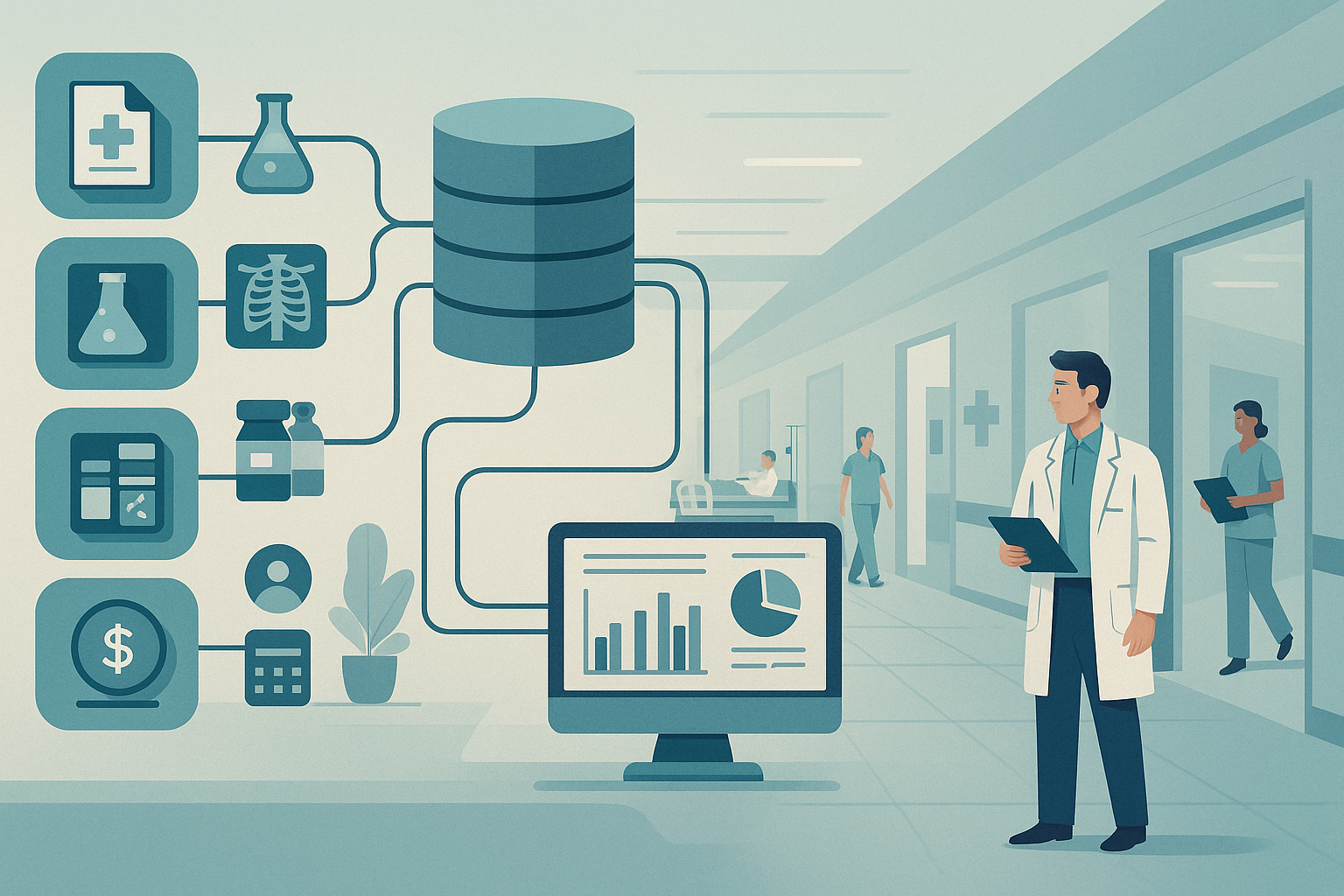
Decision Support Systems (DSS) have evolved over more than six decades, reflecting our changing relationship with data, technology, and decision-making itself. What began as experimental collaborations between human analysts and early computers has become a world of intelligent platforms that learn, adapt, and increasingly operate on their own. To understand how we got here (and where we’re going) we need to trace the layers of innovation, from military strategy rooms to predictive analytics embedded in everyday tools.
Table of Contents
1960s: The Birth of Interactive Computing and Human-Machine Collaboration
The story begins in the Cold War era, where urgency drove innovation. The SAGE system, developed by the U.S. military, was not just a feat of engineering — it was one of the first examples of a real-time, data-driven system designed to support strategic decision-making. Operators interacted directly with data via light pens and CRT displays, helping monitor and coordinate air defense. This interaction planted the idea that people and machines could solve complex problems together.
Meanwhile, in academic halls, researchers like Michael S. Scott Morton at MIT conducted experiments on how computers could aid managers. In one study, production and marketing teams used simulation models to plan operations more effectively. His findings were revolutionary: decision-making could become more informed, timely, and rational, provided systems were designed around human needs and not just machine capabilities.
1970s: Establishing DSS as a Field and Framework
By the 1970s, DSS had become an area of structured inquiry. Theorists like Peter G.W. Keen and Scott Morton shifted the focus from tools to processes. They emphasized iterative design, adaptability, and user-centered development — ideas still central to DSS today.
At the core of many systems was the DDM architecture, proposed by Ralph Sprague. It broke down a DSS into three symbiotic parts: dialog (interface), data (storage and retrieval), and model (analytical logic). This framework helped organizations build systems that weren’t just technically sound but strategically aligned.
Case studies by Steven Alter documented how DSS were being used in industries — from banking to manufacturing — offering tangible evidence that theory was translating into real business value.

1980s: The Democratization of Analytics
With the spread of personal computing, DSS moved out of the lab and into offices. Spreadsheets enabled business users to run forecasts, budget scenarios, and what-if analyses with little technical training.
In parallel, the corporate world saw the rise of Executive Information Systems. These tools distilled key performance metrics into high-level dashboards, letting C-suite executives make faster strategic decisions. Other innovations, like Group Decision Support Systems, allowed teams to collaborate through shared interfaces: an early precursor to today’s real-time collaboration platforms.
The concept of DSS was maturing, shifting from toolkits to environments that matched how people actually work, think, and decide.
1990s: Scaling Up with Warehouses and OLAP
The 1990s marked a shift from local, individual support to enterprise-wide intelligence. With the explosion of corporate data came the need for centralization. Enter the data warehouse, promoted by Bill Inmon and Ralph Kimball. These centralized repositories enabled consistent, reliable access to historical data across departments.
To navigate these massive datasets, businesses adopted Online Analytical Processing (OLAP) tools. With their cubes, hierarchies, and drill-down functions, OLAP tools turned raw data into navigable knowledge. Users could spot anomalies, trends, and correlations in seconds rather than days.
Importantly, this era also saw a shift in architecture — from mainframes to client-server systems — which allowed for more scalable, distributed computing and positioned DSS as a core element of IT strategy.

2000s–2010s: The BI Era and Cloud-Driven Transformation
By the early 2000s, web-based DSS had become mainstream. Organizations connected employees across geographies using browser-accessible dashboards and reporting tools. This set the stage for a new wave of integration under the term Business Intelligence (BI).
BI platforms offered end-to-end capabilities: from data ingestion to visualization. DSS was no longer a standalone concept but a foundational layer of digital business operations.
In the 2010s, the rise of cloud computing and mobile analytics reshaped the landscape again. Cloud architecture reduced infrastructure costs and offered elastic scalability. Meanwhile, smartphones and tablets enabled decision-making at the edge — whether on a factory floor or during a sales pitch.
Data was now fast, voluminous, and decentralized. Big data platforms emerged to cope with streaming data, unstructured formats, and predictive demands. DSS adapted by incorporating real-time data pipelines and scalable storage solutions.

2020s: Learning Systems, Automation, and Algorithmic Decisions
Today’s DSS are intelligent systems. They learn from patterns, adapt to user behavior, and sometimes act autonomously. Algorithms sort through billions of records to detect fraud, forecast supply needs, or flag patient risks — often before a human knows to look.
The boundary between recommendation and action is eroding. In many industries, DSS doesn’t just inform the decision — it makes it. From IoT-integrated systems in logistics to algorithmic trading in finance, machines are now part of the decision-making team.
Yet, this rise also calls for scrutiny. How do we ensure accountability in automated decisions? How do we design systems that are transparent, auditable, and fair?
AI, Language Models, and Autonomous Agents
The most recent wave of innovation in DSSs is being shaped by artificial intelligence (AI) and by advances in language models and autonomous agents. Unlike traditional DSS, which rely on structured databases and predefined models, these systems can interpret unstructured information, generate insights in natural language, and even carry out tasks on behalf of users.
Large Language Models (LLMs) such as GPT demonstrate the ability to synthesize vast bodies of knowledge, contextualize data, and communicate recommendations in human-like dialogue. This changes the way decision-makers interact with systems: instead of navigating dashboards or coding queries, they can simply ask questions and receive nuanced answers. Beyond passive support, the rise of autonomous agents takes DSS one step further. These agents can plan sequences of actions, connect to enterprise systems, and execute workflows automatically. For example, an agent might not only recommend adjusting inventory levels but also trigger supply orders, update forecasts, and notify stakeholders.
Practical applications are emerging across industries. In finance, AI-powered DSS detect fraud in real time and execute algorithmic trades within milliseconds. In healthcare, language models assist clinicians by summarizing patient histories, suggesting treatment plans, or monitoring critical care alerts. In manufacturing, autonomous agents coordinate supply chains by predicting demand fluctuations, managing procurement, and optimizing logistics. Even in public administration, AI-driven DSS are helping governments model policy outcomes and allocate resources more effectively.
The integration of LLMs and agents into DSS brings unprecedented speed and accessibility, but it also raises new challenges. Reliability, explainability, and control become critical: organizations must ensure that automated reasoning is transparent and that human oversight remains central to decision-making.
In many ways, AI-driven DSS represent the culmination of the field’s long journey — from static reports to dynamic, learning systems that operate as collaborators. At the same time, they point forward. As we look ahead to quantum computing, ethical governance, and the broader question of human purpose in an algorithmic world, these AI-based systems form the bridge between today’s decision support and tomorrow’s intelligent, autonomous environments.

The Near Future: Quantum Speed, Ethical Design, and Human Purpose
On the horizon lies quantum computing, promising to solve complex optimization problems beyond the reach of classical systems. The potential to revolutionize DSS is enormous — imagine instantly simulating thousands of supply chain paths or policy scenarios.
But alongside technical breakthroughs, DSS will need new governance. Autonomous decision-making systems must be built with ethics at their core. That means creating standards for explainability, bias mitigation, and human override.
The future of DSS is not just about faster machines. It’s about wiser systems — ones that augment human judgment, respect human agency, and act with integrity.
DSS has never been just about technology. It’s about the ongoing negotiation between human insight and computational power. From Scott Morton’s laundry production models to predictive AI in intensive care units, the goal remains the same: better decisions, made with clarity and confidence.
As organizations face increasing complexity and volatility, those that treat DSS not merely as a tool — but as a strategic partner — will be best positioned to adapt, grow, and lead.



